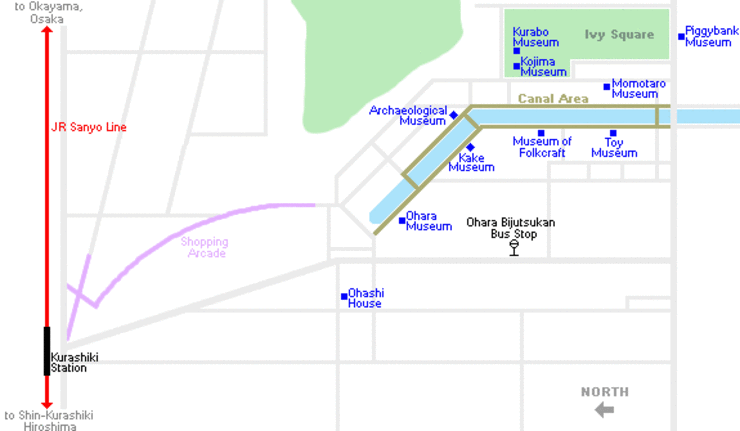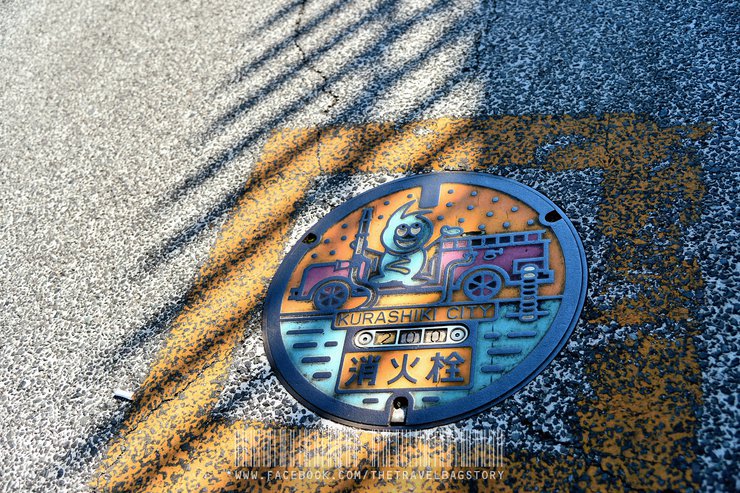Kurashiki: A City Steeped in History and Charm
Nestled in the heart of Okayama Prefecture, Kurashiki offers a refreshing escape from the bustling city life. A mere 16-minute train ride on the Sanyo Line from Okayama City whisks you away to this charming town, where the air is crisp and the sun shines brightly.
Kurashiki's compact size belies its rich history. The iconic Kurashiki Canal, dating back to the Edo period (1603-1868), served as a vital transportation route during the city's heyday as a major rice trading center. The name "Kurashiki" itself translates roughly to "town of storehouses," a testament to its commercial past.
Today, Kurashiki seamlessly blends its historical heritage with modern amenities. Strolling through the town in a simple t-shirt, you'll feel as if the entire city is air-conditioned, thanks to the pleasant weather and the shade provided by the traditional buildings lining the canal.
Beyond the canal, Kurashiki boasts a wealth of cultural attractions, including museums, art galleries, and beautifully preserved Edo-era townscapes. Whether you're seeking a tranquil escape or a journey through time, Kurashiki promises an unforgettable experience.


Traveling to Kurashiki City is not as difficult as it sounds. Take a 15-16 minute train ride from Okayama City to Kurashiki Station. The old town is about a 10-minute walk from the station. However, along the way, you can stroll through the pedestrian street, which is lined with many charming shops.

Our initial plan was not to stop at Kurashiki. We intended to take a short walk and then head to Kojima, a small coastal town known for producing Momotaro Jeans, a famous Japanese denim brand. However, our plans fell through, and we ended up spending the entire afternoon in Kurashiki. By the time we realized it was past 4 pm and the sky was getting dark, it was too late to go to Kojima. My partner was captivated by the canal-side atmosphere and mistakenly believed it to be Sego from Rising Sun. To be honest, I was also lost. We wandered around, unable to find the canal, and ended up at the Ivy Square Hotel, as shown on the map above. We continued walking north, only to encounter houses, schools, and parks. Finally, we had to turn back, losing about half an hour.







Kurashiki, an ancient city, was once known as the "Rice Trading Capital" (although it was also a trading center for other goods). During the Meiji Restoration, Kurashiki transformed into a textile industry hub. (It's fascinating how Japan's reforms a century ago spread prosperity across all regions, while Thailand's reforms during the same period concentrated development in Bangkok. This is another crucial piece of evidence that contradicts the common misconception that Siam and Japan were equally developed during the reign of King Rama V. In reality, Japan was significantly more advanced than Thailand. A century ago, Japan already had an export-oriented textile industry, which contributed to its emergence as a new industrial nation in the late reign of King Rama V. Japan also developed shipbuilding and military industries, enabling it to defeat Russia in war. Fortunately, Kurashiki was spared from American carpet bombing during World War II, preserving shops that are 200-300 years old.)




Kurashiki, similar to Okayama, boasts a plethora of museums, with a focus on leisurely experiences like the toy museum. This particular museum is dedicated to the renowned manga artist, Shigeru Mizuki, creator of the popular series "Kitaro." Even classic manga enjoyed by older generations, such as "Georgie" and "Candy Candy" by Yumiko Igarashi, are represented here.




















The final image features a recommended snack, Kaki Senbei, or oyster crackers. They are delicious and crispy, and a must-try for anyone visiting. The restaurant also sells ready-made oyster soup, which is incredibly flavorful. I brought some home, but it wasn't enough for everyone. They even asked me to buy more on my next trip to Kurashiki, as it's a local specialty (OTOP) only available there. Another place known for its delicious oyster soup is Sendai.


Thank you.
www.facebook.com/thetravelbagstory
TravelTherapy
Wednesday, October 9, 2024 5:58 PM
















